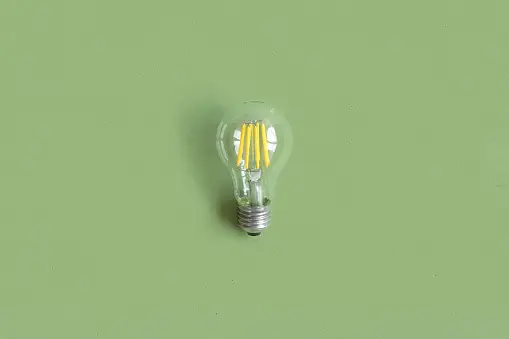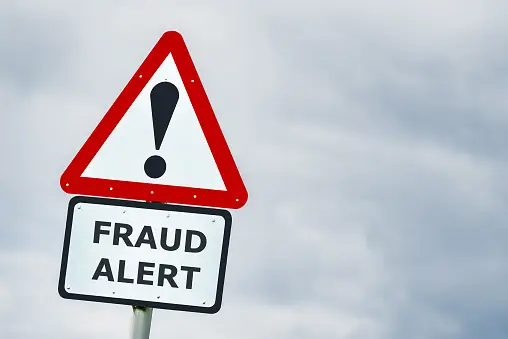Problem-solving is an integral part of daily life, influencing everything from minor decisions to major life-changing events. Whether we’re navigating personal challenges, managing professional tasks, or addressing societal issues, the ability to effectively solve problems is crucial for success and fulfillment. This skill not only helps us overcome obstacles and make informed decisions but also fosters innovation, enhances relationships, and promotes personal growth. Despite its importance, problem-solving is often taken for granted and not given the attention it deserves. This article delves into the art of effective problem-solving, offering a detailed exploration of its processes, techniques, and applications. By understanding and mastering these concepts, individuals can improve their ability to tackle challenges, achieve their goals, and contribute positively to their communities. Whether you’re a student, professional, or simply someone looking to improve your life, this guide will provide valuable insights and practical strategies for becoming a proficient problem solver.
Understanding the Nature of Problems
What Constitutes a Problem?
A problem can be defined as any situation where there is a gap between the current state and a desired state, and where there is uncertainty about how to close that gap. Problems can be categorized into several types:
- Simple Problems: These have clear goals and straightforward solutions.
- Complex Problems: These involve multiple interconnected elements and may not have a clear solution.
- Wicked Problems: These are difficult to define and often have no definitive solution.
The Importance of Problem-Solving
Effective problem-solving is vital because it enables individuals to:
- Navigate Challenges: Overcome obstacles and adapt to changing circumstances.
- Make Informed Decisions: Choose the best course of action among various options.
- Achieve Goals: Move closer to personal and professional objectives.
- Improve Relationships: Resolve conflicts and foster understanding.
The Problem-Solving Process
Step 1: Identifying the Problem
The first step in effective problem-solving is accurately identifying the problem. This involves:
- Recognizing the Issue: Being aware that a problem exists.
- Defining the Problem: Clearly stating what the problem is.
- Gathering Information: Collecting relevant data and understanding the context.
Step 2: Analyzing the Problem
Once the problem is identified, the next step is analysis. This includes:
- Breaking Down the Problem: Dividing it into smaller, manageable parts.
- Identifying Root Causes: Understanding the underlying reasons for the problem.
- Evaluating Impacts: Assessing how the problem affects different areas of life.
Step 3: Generating Solutions
Generating solutions involves creativity and critical thinking. Key steps include:
- Brainstorming: Generating as many ideas as possible without judgment.
- Evaluating Options: Considering the feasibility, risks, and benefits of each option.
- Prioritizing Solutions: Selecting the most promising solutions based on criteria such as effectiveness, efficiency, and practicality.
Step 4: Implementing Solutions
Putting the chosen solution into action requires careful planning and execution:
- Developing an Action Plan: Outlining the steps needed to implement the solution.
- Allocating Resources: Ensuring that necessary resources (time, money, personnel) are available.
- Monitoring Progress: Tracking the implementation to ensure it stays on course.
Step 5: Reviewing and Reflecting
The final step in the problem-solving process is reviewing the results and reflecting on the experience:
- Evaluating Outcomes: Assessing whether the solution effectively resolved the problem.
- Learning from the Experience: Identifying what worked well and what could be improved.
- Adjusting Strategies: Making changes to improve future problem-solving efforts.
Techniques and Strategies for Effective Problem-Solving
Critical Thinking
Critical thinking is the ability to think clearly and rationally about what to believe or do. It involves:
- Questioning Assumptions: Challenging existing beliefs and considering alternative perspectives.
- Analyzing Arguments: Evaluating the logic and evidence behind different viewpoints.
- Making Informed Decisions: Choosing actions based on a thorough analysis of information.
Creative Thinking
Creative thinking involves looking at problems from new angles and generating innovative solutions. Techniques include:
- Mind Mapping: Visualizing ideas and their connections to stimulate creative thinking.
- Lateral Thinking: Approaching problems indirectly and using unconventional strategies.
- Divergent Thinking: Generating multiple solutions and exploring a wide range of possibilities.
Decision-Making Models
Several models can aid in decision-making during problem-solving:
- Pros and Cons List: Weighing the advantages and disadvantages of each option.
- Cost-Benefit Analysis: Comparing the costs and benefits of different solutions.
- SWOT Analysis: Assessing the strengths, weaknesses, opportunities, and threats related to the problem and potential solutions.
Collaborative Problem-Solving
Working with others can enhance problem-solving by bringing diverse perspectives and expertise. Strategies include:
- Team Brainstorming: Leveraging the collective creativity and knowledge of a group.
- Consensus Building: Finding common ground and agreeing on the best solution.
- Conflict Resolution: Addressing disagreements constructively to find mutually acceptable solutions.
Applying Problem-Solving in Different Areas of Life
Personal Life
Effective problem-solving can improve various aspects of personal life, such as:
- Time Management: Prioritizing tasks and managing time efficiently.
- Health and Well-being: Addressing health issues and maintaining a balanced lifestyle.
- Relationships: Resolving conflicts and improving communication with family and friends.
Professional Life
In the workplace, problem-solving is critical for success. It can be applied to:
- Project Management: Ensuring projects are completed on time and within budget.
- Team Collaboration: Fostering a cooperative and productive work environment.
- Career Development: Overcoming career obstacles and advancing professionally.
Social and Community Life
Problem-solving skills can also benefit social and community engagement:
- Community Projects: Addressing local issues and improving community well-being.
- Volunteer Work: Contributing to causes and organizations effectively.
- Social Justice: Identifying and addressing social inequalities and injustices.
Overcoming Common Problem-Solving Challenges
Procrastination
Procrastination can hinder problem-solving by delaying action. Strategies to overcome procrastination include:
- Setting Clear Goals: Defining specific, achievable objectives.
- Breaking Tasks into Smaller Steps: Making tasks more manageable.
- Using Time Management Techniques: Implementing tools such as the Pomodoro Technique to stay focused.
Fear of Failure
Fear of failure can paralyze problem-solving efforts. Overcoming this fear involves:
- Embracing a Growth Mindset: Viewing failures as learning opportunities.
- Taking Calculated Risks: Assessing risks carefully and being willing to take informed chances.
- Building Confidence: Developing self-confidence through practice and small successes.
Lack of Resources
Limited resources can constrain problem-solving. Addressing this challenge requires:
- Resourcefulness: Finding creative ways to use available resources efficiently.
- Seeking Support: Reaching out to others for help and collaboration.
- Prioritizing Solutions: Focusing on solutions that are feasible within resource constraints.
Enhancing Problem-Solving Skills
Continuous Learning
Continuously improving problem-solving skills involves:
- Learning New Techniques: Staying updated with the latest problem-solving methods and tools.
- Seeking Feedback: Asking for feedback from others to identify areas for improvement.
- Reflecting on Experiences: Regularly reflecting on past problem-solving experiences to learn and grow.
Practice and Application
Like any skill, problem-solving improves with practice. Tips for effective practice include:
- Applying Skills in Daily Life: Using problem-solving techniques in everyday situations.
- Engaging in Challenging Activities: Taking on tasks and projects that require problem-solving.
- Learning from Others: Observing and learning from how others solve problems.
Mindfulness and Stress Management
Effective problem-solving requires a clear and focused mind. Techniques for maintaining mental clarity include:
- Mindfulness Meditation: Practicing mindfulness to stay present and reduce stress.
- Physical Exercise: Engaging in regular physical activity to improve mental well-being.
- Healthy Lifestyle Choices: Maintaining a balanced diet, getting adequate sleep, and avoiding unhealthy habits.
Conclusion
The art of effective problem-solving is a valuable skill that enhances all aspects of life. By understanding the nature of problems, following a structured problem-solving process, and employing various techniques and strategies, individuals can navigate challenges, make informed decisions, and achieve their goals. Continuous learning, practice, and mindfulness are essential for honing this skill and becoming proficient problem solvers. Embracing the art of problem-solving not only improves personal and professional life but also contributes to better communities and a more resilient society.
FAQs
What are the key steps in the problem-solving process?
The key steps in the problem-solving process include identifying the problem, analyzing the problem, generating solutions, implementing the chosen solution, and reviewing and reflecting on the results. Each step is crucial for ensuring a comprehensive and effective approach to resolving issues.
How can I improve my problem-solving skills?
Improving problem-solving skills involves continuous learning, practicing regularly, seeking feedback, and reflecting on past experiences. Engaging in challenging activities, learning new techniques, and observing how others solve problems can also enhance your abilities. Mindfulness and stress management are also important for maintaining mental clarity.
What techniques can help in generating creative solutions?
Techniques such as brainstorming, mind mapping, lateral thinking, and divergent thinking can help generate creative solutions. These methods encourage looking at problems from new angles and considering a wide range of possibilities, leading to innovative and effective solutions.
How can I overcome common challenges in problem-solving?
Common challenges in problem-solving, such as procrastination, fear of failure, and lack of resources, can be overcome by setting clear goals, breaking tasks into smaller steps, embracing a growth mindset, seeking support, and being resourceful. Developing confidence through practice and small successes also helps.
Why is effective problem-solving important in daily life?
Effective problem-solving is important because it enables individuals to navigate challenges, make informed decisions, achieve goals, and improve relationships. It is a critical skill for personal and professional success and contributes to better community and societal outcomes by fostering resilience and innovation.




